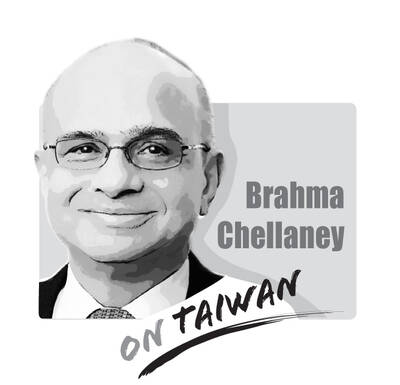China appears to be easing some COVID-19 restrictions after a week of rare mass protests in several major cities across the country, sparked by increasing public frustration with its longstanding and authoritarian “zero COVID” measures. The world is watching to see how and when it puts an end to its dead-end policy.
The protests began with streets packed with crowds calling for an end to a months-long lockdown in Xinjiang’s capital, Urumqi, on Sunday last week, after 10 people were killed in a deadly fire in a building whose locked doors likely prevented escape and rescue efforts.
More protests sprang up in Beijing, Shanghai, Chengdu, Xian and Wuhan. Students led calls for an end to repeated lockdowns, frequent quarantines and mass testing, while holding blank sheets of paper as a symbol of the government’s tight censorship. Many even called for a change in the political system.
China nearly three years ago was swift in imposing draconian measures to control the initial outbreak in Wuhan. Chinese President Xi Jinping (習近平) has touted a strict “zero COVID” policy as a success of Chinese governance that saved lives while other countries dealt with high infection rates, hospitalizations and deaths.
However, medical practitioners the world over were able to better treat the disease as more knowledge emerged. Vaccines and antiviral drugs were developed, and the emergence of the Omicron variant of SARS-CoV-2 made the disease milder. These developments allowed countries to lift the strictest measures and return to a mostly normal life. However, China has stuck to its draconian policy, with increasingly unbearable social and economic costs.
Many public health experts agree that China should end its policy, as it is simply impossible to stop every single case of the highly transmissible Omicron variant. The interminable lockdowns are damaging people’s livelihoods and mental health. However, as the virus has not had a chance to spread through the population, most Chinese likely have not developed naturally acquired immunity. This leaves the country vulnerable to a surge in hospitalizations and deaths if it abandons the policy. China has cornered itself.
While many countries used strict measures to buy time during the emergency phase of the pandemic, the measures were gradually eased as vaccinations and other medical interventions became widespread. China has failed to plan for an end to the restrictions and continued diverting valuable personnel and healthcare resources for lockdowns and mass testing.
Moreover, public health experts have raised concerns about China’s inadequate healthcare infrastructure, especially in rural areas, to deal with an expected rapid increase of infections that could overwhelm hospitals once restrictions are relaxed. Even with “zero COVID,” local cases have been rising, and an uncontrolled outbreak could increase the risk of new emerging variants.
Many experts suggest that the best way for China to lift its harsh restrictions is to vaccinate more of its older and vulnerable population and increase the capacity of its healthcare system.
Xi is possibly facing one of the biggest challenges of his decade-long rule, but he must decide whether to maintain the “zero COVID” policy — which has proved ineffective, taken a heavy toll on the economy, destroyed livelihoods and fueled public discontent — or remove the restrictions and face the risk of mass infection and deaths. The latter would mean admitting the failure of a policy he has staked his political reputation on, a model of what he calls “Chinese efficiency.”
Recently, China launched another diplomatic offensive against Taiwan, improperly linking its “one China principle” with UN General Assembly Resolution 2758 to constrain Taiwan’s diplomatic space. After Taiwan’s presidential election on Jan. 13, China persuaded Nauru to sever diplomatic ties with Taiwan. Nauru cited Resolution 2758 in its declaration of the diplomatic break. Subsequently, during the WHO Executive Board meeting that month, Beijing rallied countries including Venezuela, Zimbabwe, Belarus, Egypt, Nicaragua, Sri Lanka, Laos, Russia, Syria and Pakistan to reiterate the “one China principle” in their statements, and assert that “Resolution 2758 has settled the status of Taiwan” to hinder Taiwan’s
Singaporean Prime Minister Lee Hsien Loong’s (李顯龍) decision to step down after 19 years and hand power to his deputy, Lawrence Wong (黃循財), on May 15 was expected — though, perhaps, not so soon. Most political analysts had been eyeing an end-of-year handover, to ensure more time for Wong to study and shadow the role, ahead of general elections that must be called by November next year. Wong — who is currently both deputy prime minister and minister of finance — would need a combination of fresh ideas, wisdom and experience as he writes the nation’s next chapter. The world that

Can US dialogue and cooperation with the communist dictatorship in Beijing help avert a Taiwan Strait crisis? Or is US President Joe Biden playing into Chinese President Xi Jinping’s (習近平) hands? With America preoccupied with the wars in Europe and the Middle East, Biden is seeking better relations with Xi’s regime. The goal is to responsibly manage US-China competition and prevent unintended conflict, thereby hoping to create greater space for the two countries to work together in areas where their interests align. The existing wars have already stretched US military resources thin, and the last thing Biden wants is yet another war.
Since the Russian invasion of Ukraine in February 2022, people have been asking if Taiwan is the next Ukraine. At a G7 meeting of national leaders in January, Japanese Prime Minister Fumio Kishida warned that Taiwan “could be the next Ukraine” if Chinese aggression is not checked. NATO Secretary-General Jens Stoltenberg has said that if Russia is not defeated, then “today, it’s Ukraine, tomorrow it can be Taiwan.” China does not like this rhetoric. Its diplomats ask people to stop saying “Ukraine today, Taiwan tomorrow.” However, the rhetoric and stated ambition of Chinese President Xi Jinping (習近平) on Taiwan shows strong parallels with